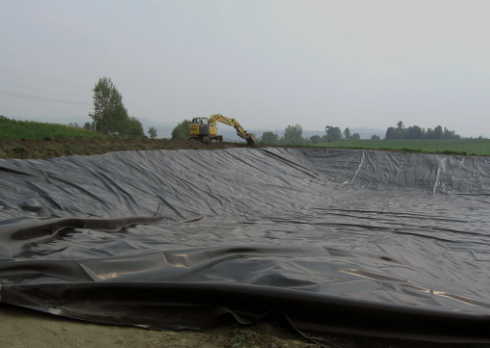- Understanding the Role of Geomembrane Liners in Waste Management
- Innovations in Geomembrane Liners for Water Management
- Geomembrane Liners: A Comprehensive Guide
- The Future of Geomembrane Liners in Civil Engineering
- Geomembrane Liners: Enhancing Landfill Stability
Manager:
WhatsApp:+86 177 0135 2670
Tel:+86 177 0135 2670
Email:marketing@okorder.com
Address:3rd Floor, No.2 Building, No.1 Sanlihe Road
How do I keep my HDPE geomembrane from floating?
High-density polyethylene (HDPE) geomembranes are versatile materials used in many engineering and environmental applications because of their impermeability and durability. However, sometimes they may float or be buoyant which presents a problem especially in water containment areas. This article will explain why HDPE geomenbranes float, how to prevent it from happening as well as some tips on what you should do to ensure that your geo-membrane does not float.

Understanding the Buoyancy of hdpe Geomembranes
Density and Buoyancy Forces:
Whenever submerged underwater, the buoyant forces acting on an object is determined by comparing its density with that of water. Usually, high-density polyethylenes have lower densities compared to those for H2O hence they experience upward thrusts when immersed in fluids such as these ones. The result can be floating if proper measures are not taken like fluctuation levels or inadequate weighting and fastening systems where necessary.
Surface Tension and Air Entrainment:
Surface tension along with trapped pockets of air beneath can worsen problems related with floating a Geomembrane made out of HDPE material . When there exists any amount of this gas between the sheeting and water surface level; supplementary buoyant forces get created thereby increasing chances for flotation.
Wind Action And Waves:
The wind as well as wave activity also contributes towards making an HDPE liner to float over still waters or other liquid surfaces . In some cases powerful winds may cause uplift pressure which in turn lifts up the lining until it reaches topmost part thus causing displacement plus probable damage.
Prevention Of Floating For HDPE Geomembranes
Increase Weight Or Provide Ballast:
To stop an hdpe pond liner from becoming buoyant one can make use of additional mass or ballast. This could be achieved through placing more materials like concrete blocks, gravels and soil above the sheets in order to provide weightiness that counteracts against buoyancy forces.
Anchor Or Secure Edges:
Movement should be kept at minimum levels so as not to create any undesired floating effects . Trenching or berming methods can be used while anchor trenches with Geotextiles may also serve this purpose well by ensuring stability and preventing displacement.
Install Anti-Floatation Devices:
In order for a floating problem to be solved, anti-float devices such as aprons made of geotextiles can be put around the edges of an hdpe pond liner. These act as barriers which restricts flow of water beneath them thereby minimizing chances for uplifting forces and subsequent floatage.
Improve On Surface Friction:
Increasing adhesion between an HDPE liner material and underlying surfaces is another way through which floatages can be prevented. This involves roughening or texturing subgrades, installing underlays made out of geotextile fabrics among other things that enhance interface frictions thus reducing possibilities of liners being lifted up by water currents from below.
Implement Slope Or Sloped Berms:
In areas where there are slopes involved during construction work carried out near lakesides; it would help if gentle slopes were created or sloping berms constructed since they discourage accumulation of water which might result into air bubble entrapment leading into lining floatation problems.
Regular Maintenance And Inspection:
It is important to regularly inspect all parts of a geomembrane system as this will enable timely detection and correction of any potential issues that may lead to flotation. Checking whether ballasts are intact; monitoring anchor points effectiveness along with functionality among other things must therefore never be ignored at any given time.

Conclusion
To sum up preventing HDPE geomembrane from floating requires considering how it is designed, installed and maintained. Knowing the causes of buoyancy forces acting on them enables individuals prevent their movement in water or moisture while implementing such solutions would help keep them stationary so that success can be achieved for various containment projects involving these liners whether through weight increase, edge anchorage installation anti floatation devices improvement surface friction among others.
- Previous:Is HDPE geomembrane safe for long term water storage?
- Next:Can HDPE geomembrane be used for sewage?
-
2024-12-05Geomembrane Liners: A Comprehensive Guide






